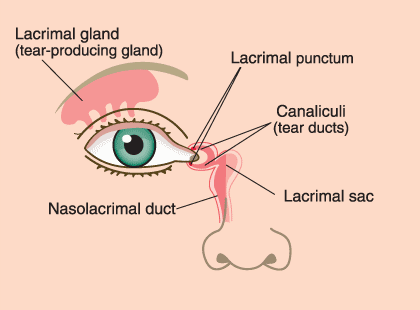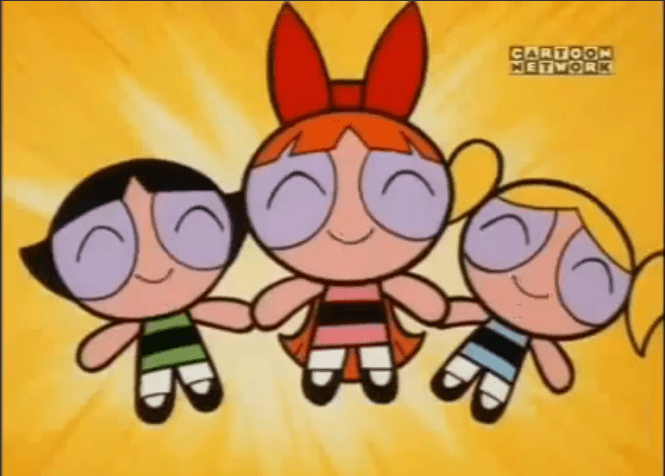I tend to leak tears when I’m angry, upset, or frustrated: it’s one of the most annoying things about being female. It even trumps the random black hairs that show up on my chin. [i]
There you are, making a point, presenting a rebuttal, or holding your space when suddenly, your voice cracks. You sniff because your nose has started to run. You realize tears are imminent.
I fight them off by breathing deeply, pursing my lips, and swallowing repeatedly. Sometimes it even works. The tears are exceptionally frustrating because as soon as they appear, men stop listening. It’s even worse with doctors, and I’m already at a disadvantage there because I’m female. Lest you feel compelled to jump in with “but my doctor’s awesome,” I’ve had good doctors, too. But anecdotes are almost never evidence. [ii]
Doctors also tend to think worse of me/treat me badly because of the “mental illness” designation. If tears show up in addition, I’m doomed. Everything becomes about soothing me. Listening ceases to occur. There is now zero chance I’ll receive the necessary help.
It would be nice if tears came in colours. Then people would know how to react to the different types. They would know when women were crying tears of frustration and rage. Every tear’s meaning would be immediately apparent.
It’s not my imagination that women cry more than men: various studies confirm it. Women weep four times as more, though only in some cases. In countries where freedom of expression is discouraged, such as Nepal, everyone cries less. Different rates in different cultural situations suggests that while testosterone (male) and prolactin (female) have some impact, socialization is more significant.
Women may shed their tears at varying rates, but one thing seems to remain constant wherever you go. Generally speaking, societies prefer men to do their crying on the inside. That is until they have some sort of crisis related to suppressing their emotions. [iii] Then society is all about fixing things. Until our interest wanes.
Tears are salty like the sea. It comforts me, that connection to the ocean. I like that our biology links us to our world.
Tears are also eternal, again like the ocean (we hope). You’ll never run out of tears (though you may produce slightly less than the average one hundred litres a year as you age).

Human beings have three basic types of tears: basal, reflex, and emotional. [iv] Some people like to break emotional tears into distinct sub-categories – grief tears, happy tears, and so on. True to life but hard to identify.
I still think genetic tweaking to colour code is the way to go. Our response to and interpretation of tears is essential and can have lasting consequences. And where’s the harm in a little genetic manipulation between friends?
We cry all the time. Did you know that? Basal tears are the tears that keep our eyes protected, nourished, and lubricated. They drift across the surface of our eyes in a constant flow, but we overlook the slow seep from the lacrimal glands to the nose. [v]
Tears drain into the nose, which is why you get stuffed up when you cry. Things are fine at the regular rate of flow. It’s when the volume dramatically increases that problems arise. The drainage system backs up: sinus swelling ensues. It’s like rush hour on the highway: the system’s not built for it.
Once the tears are spent, and you’ve snuffled back gallons of salty snot, it’s time to begin repairs. Ice packs bring relief to the post-cry face and nose (if you’re a smartie and keep a moldable bean bag in the freezer, even better). Don’t forget to wrap the ice; else, the cold will burn the skin. I use a cloth napkin on a lunchbox ice pack myself.
I’m grateful I have two ice packs and can alternate them when they get warm. I’ve been crying a lot and need convenient swelling reduction. I’m also thin-skinned to the point of transparency and touchy in the extreme. I think it’s the “pain-depression-stress-covid-existential struggle” stuff. I even cried when the rogue wave rolled Poseidon. Usually, I’m as thrilled as a sociopath at witnessing movie disasters with high body counts.
And, while I’m giving myself the thumbs up for my efforts at self-presentation, doing the hair and make-up even if I’m miserable, it’s still weird to blow my nose and see flakes of mascara or eyeliner appear. [vi] Tears carry more than themselves along the lacrimal road. The Cleopatra-style eyeliner trend is a boon for ophthalmologists: it leads to blocked tear ducts on the regular. [vii]
Reflex tears, the final type, are about keeping the eyes safe. Reflex tears ensure that unwanted additions to the eye are eliminated. The weeping you do when cutting onions, for instance, ensures that none of the onion’s chemical irritant remains in the eyes. Getting an onion cold before cutting it helps. Banish it to the freezer for fifteen minutes, or give it a nice ice bath, and you can save the tears for “tonight, on a very special episode of Powerpuff Girls.”

[i] Though not in mole, and I’ve yet to feel an urge to cackle and hiss, “I’ll get you my pretty, and your little dog, too!”
[ii] Why Doctors Downplay Women’s Health Concerns, Camille Noe Pagan, New York Times, May 3, 2018, newspaper.
[iii] Why We Cry, Laura Collier, American Psychological Association, February 2014, web.
[iv] Several articles I read suggested that animals only produce basal and reflex tears. That animals do not produce emotional tears. I assume the authors of these studies were humourless narcissists that have never seen or interacted with any kind of animal, in any way, ever.
[v] Tears drain into the nasolacrimal ducts, which run down each side of the nose. In the nose, tears mix with the nasal mucus. You now have the recipe for snot. The rate of flow for basal tears is of 1.1 grams oer twenty-four-hours. So, you can be forgiven for not noticing you’re weeping.
[vi] Yes, I check my mucous. My former doctor (RIP) told me it was a good practice, that mucous is a good indication as to the state of your health.
[vii] I have been spelling “ophthalmologist” incorrectly my entire life. I know Google says so, but are we really sure it isn’t “opthamologist”?


loved it. educational and interesting! my crying is SO unpredictable, at 56. I’m having a very hard time crying for my late husband. the pain in my heart and mind is still very fresh and hurts, but I can’t shed tears. why? my next blog will discuss. thank you for sharing this very good piece. XXOO
LikeLiked by 1 person
Thank you. Sometimes, I think we don’t cry over some things because it feels like if we start, we’ll never stop. 💖
LikeLike
of course this is true. more than likely in this case, I’m sure. I experienced the most horrible tears and sobbing on the morning of his death, when I got home and saw his sneakers by the bed. just recalling it now makes causes my stomach to flip, and tears to gather. those shoes were kind of dirty, and the laces were still tied. he loved them, and floodgates opened in my memory and in my eyes…my breathing became difficult and “hitched,” as I sobbed.
but since that episode, there has been great sadness and pain without tears. it will be 5 years in 2 weeks. weird huh?
and I have been subjected to judgement by doctors and nurses in the healthcare field, upon learning I am bipolar with an eating disorder. it’s just a fact.
I LOVED your piece and was very interested in all the facts your presented. a whole new perspective on tears. and the ABSENCE of them…deserves a closer look, don’t you think?
LikeLiked by 1 person
I read a book I loved about tearless witches, how they feel so deeply and intensely that they cannot shed tears. But, the tears they don’t shed are collected magically and create healing pools in the greater reality (i.e. beyond the earth), which is a nice thought.
I cannot imagine the rip in the soul that losing your life partner would create, regardless of relationship complications. I remain so very sorry. 💗
LikeLike
Em – it is truly a “rip” ….I describe it in “widow”….I remain severed and bloody. it’s not a neat, packaged box of grief, but rather a circuitous, deep ravine that water gushes through, cutting it’s gash into your Tearless Witches pools…here they can gather, heal and love, I hope.
LikeLiked by 1 person
Thanks for the heads up on “ophthalmologist.”
Great post. I’m in agreement about the troubled doctor visits. Been there, too!
LikeLiked by 1 person
You’re welcome. It’s good to be old-ish and still learn things. Thanks for reading 🙂
LikeLiked by 2 people
I like the colour-coded idea. I think bright red should be the colour for fuck you, asshole.
LikeLiked by 1 person
OMG! I laughed-snorted. That would be the best. It would show up in offices all the time.
LikeLiked by 1 person
It sure would!
LikeLiked by 1 person
An interesting, educational post. So many different types of tears.
Color coded tears. Hmmm… OK, but, that does not mean that we would know the reason behind them, which I think is important.
LikeLike
Reblogged this on Notes and commented:
A “fuck you, bitch” response without any tears by men will probably color them back to normal. The point Em is trying to make here is how can a woman avoid changing focus without being affected by her tears. No matter how much we try to understand the science of tears, emotions overpower any control over our reactions (verbal or otherwise). I think let the tears flow and keep being yourself. And things with more desirable outcome will become closer to what we are striving for. Remember, words coupled with tears are the most powerful thing out there.
LikeLiked by 1 person